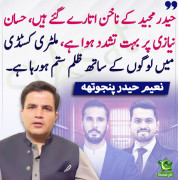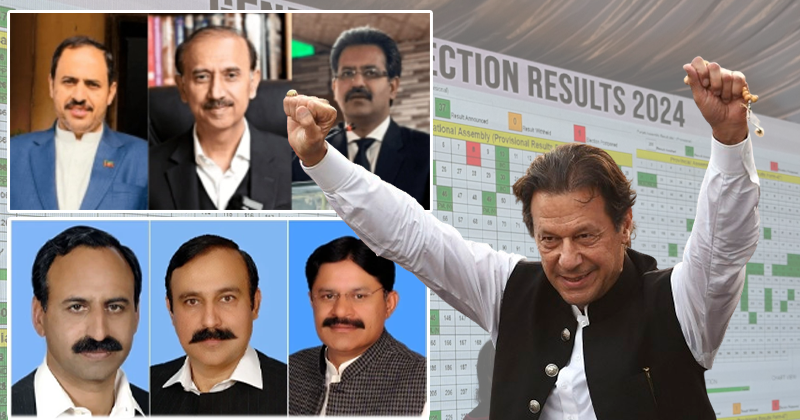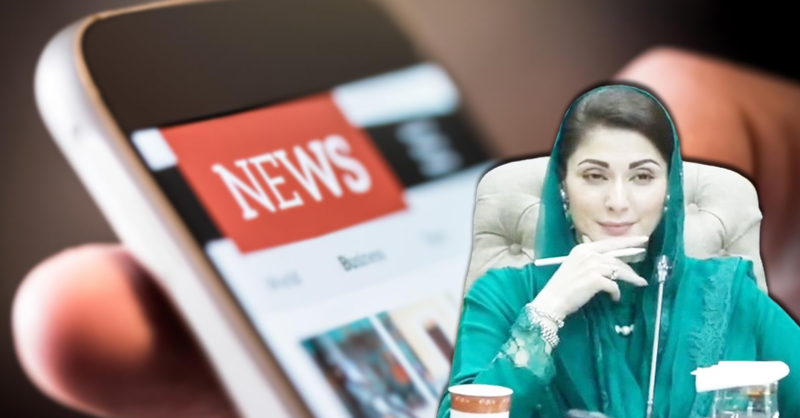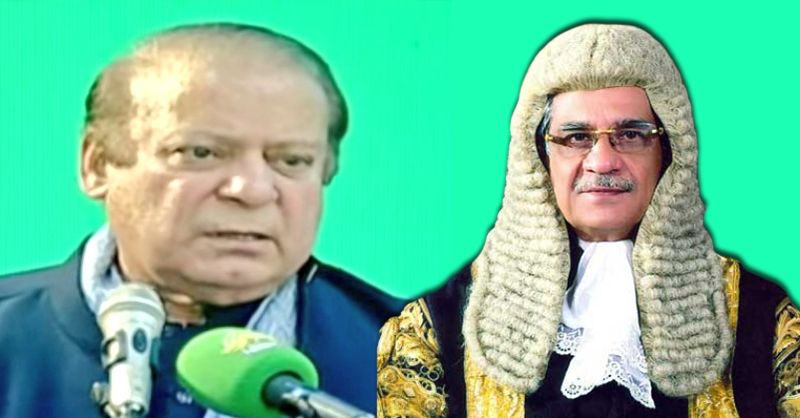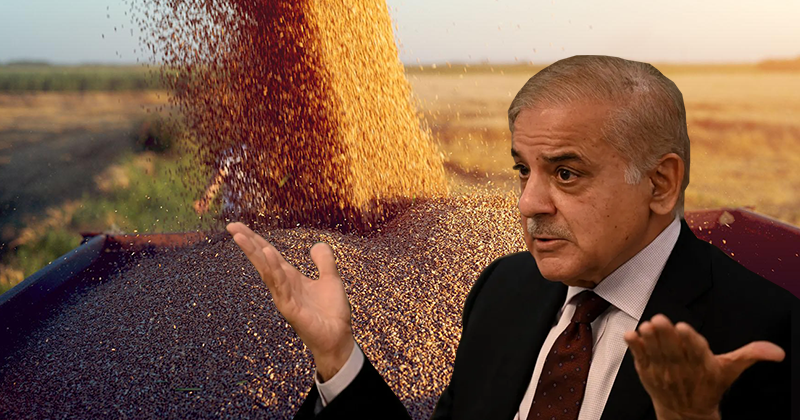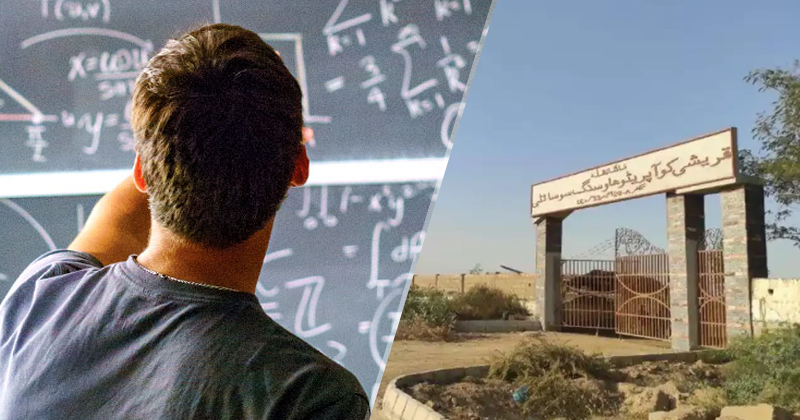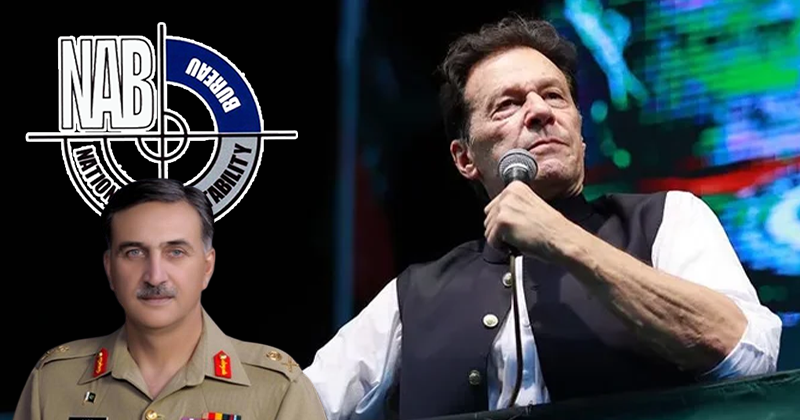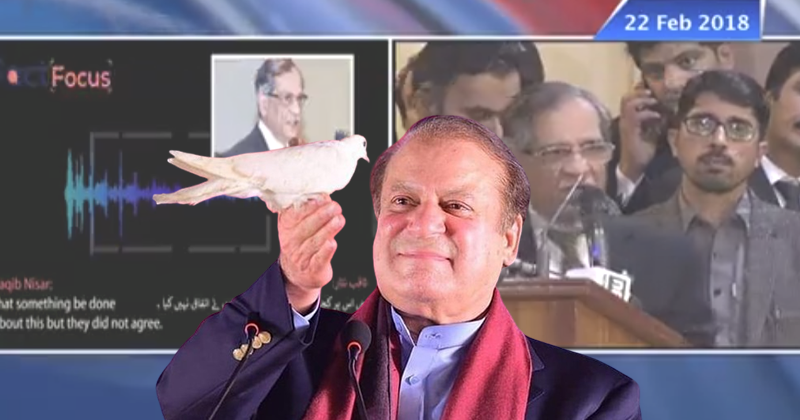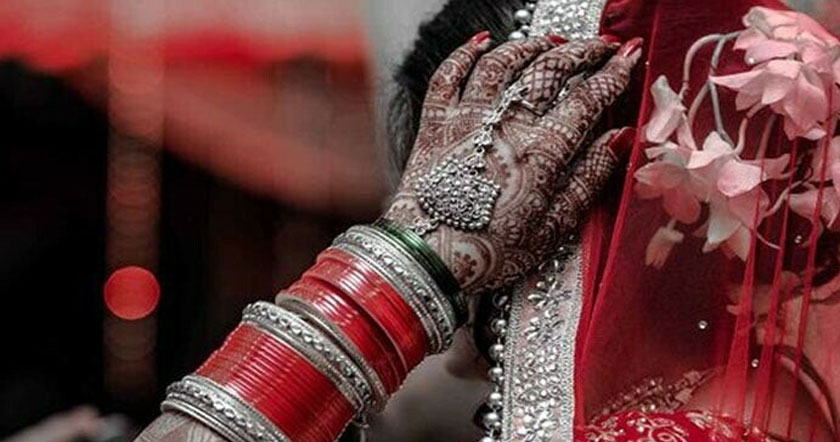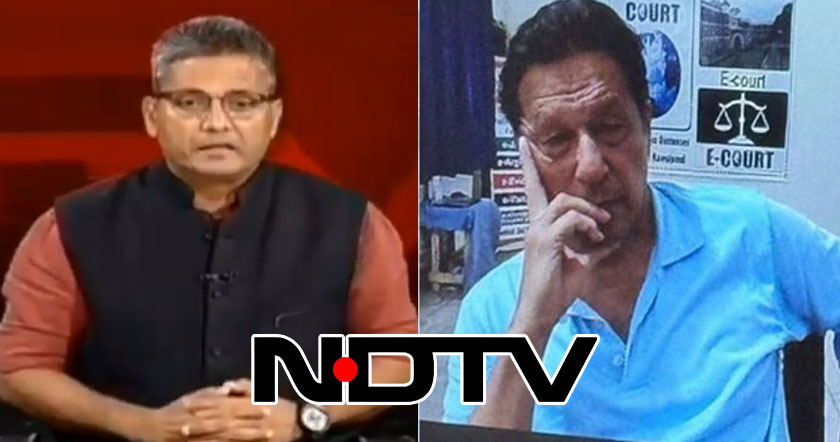Insurgency dates Leaders
First Conflict 1948 Mir Ahmad Yar Khan
Second Conflict 1958-59 Nawab Nowroz Khan
Third Conflict 1963-69 Sher Mohammad Bijarani Marri
Fourth Conflict 1973-77 Nawab Khair Baksh Marri
Fifth Conflict 2004-to date Nawab Akbar Khan Bugti and Mir Balach Marri
Controversies involving these areas date back to the establishment of the Durand Line in 1893 dividing Pashtun and Baluch tribes living in Afghanistan from those living in what later became Pakistan. Afghanistan vigorously protested the inclusion of Pashtun and Baluch areas within Pakistan without providing the inhabitants with an opportunity for self-determination.
In 1897 the wave of unrest which passed down the frontier, made itself felt in Baluchistan. A movement among the Sarawan chiefs, which might have had serious consequences, was averted by the arrest and imprisonment of two of the ringleaders. In the same year an outbreak occurred in Makran, and British troops engaged the Makran rebels at Gokprosh in January 1898 and the ringleader with many of his followers were slain. Another outbreak occurred in Makran in 1901, which was also put down by British troops by the capture of Nodiz fort.
Since 1947, this problem has led to incidents along the border, with extensive disruption of normal trade patterns. The most serious crisis lasted from September 1961 to June 1963, when diplomatic, trade, transit, and consular relations between the countries were suspended.
Divided in the nineteenth century among Iran, Afghanistan, and British India, the Baloch found their aspirations and traditional nomadic life frustrated by the presence of national boundaries and the extension of central administration over their lands. Moreover, many of the most militant Baloch nationalists were also vaguely Marxist-Leninist and willing to risk Soviet protection for an autonomous Balochistan.
Inspired in part by the Sardars [tribal chiefs] who fear loss of power if the province develops economically, the movement has at times threatened the integrity of the Pakistani state. Grievances harbored by the Baluch stem from their economic deprivations. Baluchistan has economic resources which the successive federal governments have exploited without either due acknowledgement of Baluchistan's contribution to the national economy or recompense in monetary or financial measures. Natural gas deposits were found in the Sui area in 1953 and in Pirkoh in 1982. The natural gas deposits of Baluchistan cater in a very large measure to the running of industries, factories, businesses and domestic usage in all of the provinces of Pakistan. The Baluch nationalists claim that the royalties received from these projects are next to negligible.
Baloch nationalists demanding greater political rights, autonomy and control over their natural resources, have led four insurgencies - in 1948, 1958-59, 1962-63 and 1973-77 - which have been brutally suppressed by the army. Now a fifth is underway and this time the insurgents have gone a step further and are striving for seccession. Violence in Baluchistan historically has been the product of several factors: a fiercely independent Baluch people that eschew outside interference; the lasting legacy of British policy; mismanagement by ruling Pakistani regimes; and historical grievances that have allowed Baluch leaders to mobilize support for their nationalist cause. The most recent surge of violence in Baluchistan is a result of a change in the relationship between the central government and Baluchistan brought about by the province's growing strategic significance.
Balochistan Insurgency - First Conflict 1948
(led by Mir Ahmad Yar Khan)
The Khan (Beglar Begi Mir Sir Ahmad Yar Khan) declared the independence of Kalat, but offered to negotiate a special relationship with Pakistan. Other Baluchi chiefs (sardars) also expressed their preference for a separate identity [some sources report that the Khan declared independence two days before Pakistan declaration of statehood, other say it came on August 5, 1947, a day after the independence of Pakistan].
Kalat was the last state to accede to Pakistan. After the British left Balochistan on 13 August 1947, the Khan declared to join Pakistan. The central government sent the Pakistan army, who forced Mir Ahmed Yar Khan to give up his state. Mir Ahmed Yar Khan signed an accession agreement ending Kalat's de facto independence. Finally the Khan of Kalat Mir Ahmed Yar Khan acceded unconditionally, and the Instrument of Accession was signed on 27 March 1948.
Balochistan Insurgency - Second conflict 1958-59
led by Nawab Nowroz Khan)
Nawab Nauroz/Nowroz Khan, commonly known by Balochs as Babu Nowroz, was the head of the Zarakzai tribes of Balochistan. He started an armed struggle against the Pakistani government for liberation of Baloch lands (Balochistan). Nawab Nowroz Khan took up arms in resistance to the One Unit policy designed and initiated by the federal government to eliminate ethnic and provincial divides and prejudices. He and his followers were charged with treason and arrested and confined in Hyderabad jail. Five of his family members (sons and nephews) were subsequently hanged. Nawab Nowroz Khan later died in captivity.
It was alleged that the Khan of Kalat and his kinsmen were mustering forces to secede from Pakistan. Indeed, the Khan had acceded to Pakistan under the stress of circumstances and not entirely willingly. Now, when Pakistan was in real trouble, he thought, a show of force would do the trick and get him Independence. Some people say that the idea was suggested to him by Iskandar Mirz. If this version is accepted, the disgruntled Khan readily swallowed the bait. He did it independently, or on the instigation of India, Afghanistan or lskander Mirza himself, the position remains that the Khan of Kalat repudiated Kalat's accession to Pakistan and appealed to the tribesmen to rise in arms. Even so Iskander Mirza invited the Khan to come to Karachi and explain the situation to him. He refused to go to Karachi. Instead, he desecrated the national flag of Pakistan and hoisted his own ancestral standard on the palace in Kalat. The press immediately carried the news of Khan's revolt.
It was stated that the Interior Minister, Nawab Akbar Khan Bugti had offered his good offices to the President to fetch the Khan to Karachi and avert a dangerous situation. But Bugti was not allowed to leave the Capital. Two days later, on October 6, 1958 the Pakistan Army arrested the Khan on the chargesof treason.
According to official sources the Khan's palace was cordoned off by troops early in the morning on the day of his arrest. An accompanying civil officer summoned the Khan to surrender. The Khan refused to come out, instead, he invited the Deputy Commissioner (D.C.) for parleys in his palace. Thus he tried to lure the Deputy Commissioner into an ambush. As the Deputy Commissioner (alongwith his escort) came within range he was fired upon by palace guards led by the Khan's son, Prince Mohiuddin. Three persons were wounded. In retaliation a tank fired a volley of shots on the palace wall and the Khan was forced to surrender. He, alongwith his son Mohiuddin, was arrested and flown to Lahore. While the Khan was being whisked away, a crowd collecteJ outside the palace. They refused to disperse. In due course, the troops opened fire killing three and wounding two others. About 50 of the Khan's retainers and some 300 other activists were arrested in Kalat and other towns. It was stated that the Khan had stored large quantity of weapons and food to provide for a large private army.
On the same day, October 6, President Iskander Mirza issued an order, whereby he divested Mir Ahmed Yar Khan of Kalat of all distinctions, privileges and immunities, including his privy purse of Rs 6,00,000 a year. His eldest son, Prince Daud Jan, who was back home from school in Britain was formally nominated as successor. On the day following the arrest of Mir Ahmed Yar Khan, Martial Law was imposed. not only in Baluchistan but in the entire country. The President abrogated the first Constitution of Pakistan, banned all political parties, dissolved the assemblies, dismissed the provincial and central governments, and appointed General Mohammad Ayub Khan, Commander-in-Chief of Pakistan Army as Chief Martial Law Administrator, CMLA.
The Army ordered the tribesmen not to carry arms without licence. They refused to comply with this order. The Army construed this as an affront and brought in armored vehicles and artillery in key paces as a show of force and authority. The Army blocked some mountain passes to check recalcitrant elements in Jhalawan from neighbouring Sarawan. Some skirmishes were reported between the troops and the tribesmen.
Naoroz Khan, ninety years old Chief of the Zehri tribe assembled a Lashkar of some 500 men in the mountains of Jhalawan and demanded (one), unconditional release of the Khan-e-Azam; (two) return of confiscated arms, and; (three), annulment of One Unit. He threatened that rejection of these demands would result in use of violent force.
The Government paid no heed to his demands. On October 10, 1958, four days after the Khan's arrest the army located a Lashkar near Wad, about 40 miles south of Khuzdar and inflicted heavy losses on it. Nevertheless, the power of the rebels could not be broken, In fact they continued to hit whenever an opportunity lent itself to them. The spirit of insurgency grew and a number of guerrilla bands joined Naoroze Khan in the hills. Soon it spread all over Jhalawan district and the army got deeply involved in counter-insurgency measures. On some occasions air straffing too had to be undertaken. The insurgency lasted for about a year. In 1960, the Governmentlaunched a full-fledged military operation inflicting heavy casualities on the guerrillas. Even then no end to hostilities was in sight.
Later the representatives of both the sides met in order to discuss terms for cessation of hostilities. During or after the meeting it is stated, Naoroze Khan and some of his sons and followers, were detained. It was claimed, they had been promised safety and amnesty, and that their detention was a case of breach of trust and truce. Later, 163 persons were tried by a Special Military Court set in Mach Sail near Quetta. Naoroze Khan Zairakzai, his son I3atay Khan and five other members of his family were awarded capital punishment. In July 1960, the rebels were executed in Sukkur Jail but not Nawab Naoroze Khan. His death sentence was commuted to life imprisonment in view of his old age. He died four years later in Kohlu Prison. Many young I3aluch called him a martyer. He had fought and risked his life for Mir Ahmed Yar Khan of Kalat.
Balochistan Insurgency - Third conflict 1963-69
led by Sher Mohammad Bijarani Marri
After the second conflict the Federal government sent the Army to build new garrisons in the key trouble areas of Balochistan. Sher Mohammad Bijarani Marri led like-minded militants to start a guerrilla warfare against the establishment of these posts by creating its own posts of insurgency spreading over 45,000 miles (72,000 km) of land from the Mengal tribal area in the south to the Marri and Bugti tribal areas in the north. The insurgents bombed railway tracks and ambushed convoys. The Army retaliated by destroying vast areas of the Marri tribe. This insurgency ended in 1969 when Yahya Khan abolished the "One Unit" policy and the Balochs agreed to a ceasefire. This eventually led to the recognition of Balochistan as the fourth province of West Pakistan (present-day Pakistan) in 1970.
By June 1962, President Field Marshal Muhammad Ayub Khan ended the Martial Law and gave a new constitution to Pakistan. He reconciled with the view probably at the exhortation of Mr Z A Bhutto that it would be expedient, even if not legally correct, to release the Khan of Kalat from house arrest in Hazara district. The Khan returned to Kalat and his people, once again.
Sher Mohammad Marri, a towering, hulk of a man, who already had undergone a total of fourteen years imprisonment for "seditious activities". He claimed to be a Marxist. His nickname was Sherov. On release from imprisonment he organised a powerful guerrilla force. He had two "commands", the Northern and the Southern. The Northern Command of Marri-Bugti area was under his personal supervision. Here he was assisted by Mir Hazar Ramkhani who was in charge of recruitment and training. The Southern Command in Jhalawan district was headed by All Mohammad Mengal.
The southern Command was further sub-divided into Northern and Southern Sectors. The Northern Sector comprising Kalat and M astung districts was under the command of Laung Khan. The Southern Sector covered Khuzdar and Wad. It was under the direct command of All Mohammad Menga1. Each of the two Headquarters were manned by a command force of 400 persons. They could also call hundreds of reservists on short notice.
It was believed that by July 1963, Sher Mohammad had established 22 base camps in Marri-Bugti and Mengal areas13He avoided pitched battles and resorted to harassment of the Arm) in the classical guerrilla warfare fashion. He laid ambushes on army convoys, army engineers engaged in road construction and army signals deputed on telephone maintenance.
The army hit back with force to subdue the "Ferraries", outlaws Sher Mohammad was a rich man and owned several large almond orchards. He was not a proletarian even though he claimed to fight for their cause. A Western writer has stated that during anti-insurgency operations the army destroyed his orchards. This, however, is denied by the army. At the beginning of 1968, the Army, under the command of Major General Tikka Khan, GOC 8th Division, struck the "Ferraries". Sher Mohammad Marri put up a stiff resistance. Meanwhile, the government took some adminstrative measures to break the power of the Sardars, and the sons and relatives of the Sardars who, in its view, were behind the apparently populist insurgency. Prominent tribal Sardars, Nawab Mohammad Akbar Khan Bugti, Sardar Ataullah Khan Mengal and Khair Bakhsh Marri were deposed from chieftainships. The governor of West Pakistan Nawab Amir Mohammad Khan of Kalabagh appointed other men in there places who were favourably disposed towards the Government. Even the British had not changed the Sardars in such an arbitrary manner as Kalabagh did.
In 1963 the new appointees, Dodha Khan, an uncle of Khair Bakhsh Marri and Karam Khan Mengal, the uncle of Sardar Ataullah Mengal's father were assassinated by the "Ferraries". The killing of the nominated chiefs was to undermine Government's authority. On this the Government reaction was strong. It immediately ordered the army to deploy troops in strength in the troubled area. The army took punitive action against the "Ferraries" without tangible results. These tactics created hatred against the army and the Punjabis. The Baluch seemed all the more united now. In fact, military operations, supported by the airforce, made them die-hards. Sher Mohammad Marri's movement gained momentum and Baluch youth from the urban centers started joining the "Ferraries" in the hills. The Baluchistan people Liberation Front (BPLF) becamcestronger. The "Ferraries" published an underground newspaper called "Spark" in Baluchi, Urdu and English languages. Strangely enough "Spark" gained currency among the Baluch as well as Bengalis.
In 1967, Governor Amir Mohammad Khan and President Field Marshal Mohammad Ayub Khan fell out. Ayub replaced him with General Mohammad Musa Khan, formerly Commander-in-Chief of the Pakistan Army. He was a respected Persian-speaking Hazara gentleman from Quetta. There was also a change in Government's attitude towards Baluch leaders. The Government announced general amnesty and decided to release Baluch leaders and about 1,300 "Ferraries" in the process of normalisation the Government also reinstated the former Chiefs to Chieftainship. In return for amnesty the Government expected that the "Ferraries" would lay down their arms at a public ceremony. However, it was against the traditions of the Baluch to lay down arms, and that too publically.
Lack of response from Baluch Sardars did not help to improve relations. In May 1968 Mohammad Akbar Khan Bugti, Gul Khan Naseer and Ghous Bakhsh Bizenjo were taken into custody once again Abdus Samad Achakzai who had been released after a long term of imprisonment was also rearresfed
In 1970 General Yahya arranged General Election on the principle of "one man, one vote". From Baluchistan, Sardar Ataullah Mengal, Ghaus Bakhsh Bizenjo and others contested the election. Sardar Mohammad Akbar Khan Bugti did not qualify under Yahya's Legal Framework Order (LFO) as he had been in prison for over two years. Abdus Samad Achakzai was also under a similar ban, but it was removed on his personal appeal to the Government. In the meanwhile some prominent I3aluch leaders had formed an alliance with the NAP of Abdul Wali Khan which however, collapsed soon after the elections. The main difference which had developed among them was over the East Pakistan crisis. To begin with the Baluch leaders had generally supported the seditious moves of Mujibur Rahman. The NAP suggested a political solution of the problem on the basis of "five nationalities".
Later, Baluch leaders adopted a wait-and-see attitude and eschewed armed struggle. Possibly, they thought that any armed struggle at this stage would adversely affect their relations with other political parties. Very strong nationalistic feelings had been aroused by Mr Zulfiqar Ali Bhutto the Chairman of the Pakistan People's Party (PPP) all over West Pakistan. Another reason for the low profile of Baluch leaders during the East Pakistan crisis and Indo-Pakistan War was rather sympathetic attitude of King Zahir Shah and the Afghan people towards Pakistan. It also seemed that the Soviet Union which had considerable influence on Afghanistan - was not in favor of the complete disintegration of Pakistan. A certain sense of honor among the Baluch people was one of the factors which prevented resurgence of subversion in Baluchistan at that critical point of time.
Balochistan Insurgency - Fourth conflict 1973-77
led by Nawab Khair Baksh Marri
Bhutto dismissed the coalition government of Baluchistan in 1973 on the grounds of its alleged encouragement of a secessionist movement, smuggling and opposition to modernization. Opposition leaders were arrested and jailed, and in 1976 the sardari 'tribal chief' system was abolished. Meanwhile the war had escalated; by 1974 it was reported that as many as 55,000 Baluchis were fighting some 70,000 government troops. It is estimated that over 5,000 insurgents and 3,000 government troops were killed. The insurgency continued fitfully until the fall of the Bhutto government in 1977 and the subsequent release of jailed leaders of the region.
The Iraqi government provided support for Baluchi separatists in Pakistan, hoping that their conflict would spread into Iran. Iraq provided the Baluchis with arms, and it opened an office for the Baluchistan Liberation Front in Baghdad. Soon thereafter, a Baluchi insurgency which lasted until November 1977 broke out. Tehran supplied Islamabad with AH-1 (Cobra) helicopters and crews.
A long-dormant crisis erupted in Balochistan in 1973 into an insurgency that lasted four years and became increasingly bitter. The insurgency was put down by the Pakistan Army, which employed brutal methods and equipment, including Huey-Cobra helicopter gunships, provided by Iran and flown by Iranian pilots. The deep-seated Baloch nationalism based on tribal identity had international as well as domestic aspects. As the insurgency wore on, the influence of a relatively small but disciplined liberation front seemed to increase.
Bhutto was able to mobilize domestic support for his drive against the Baloch. Punjab's support was most tangibly represented in the use of the army to put down the insurgency. One of the main Baloch grievances was the influx of Punjabi settlers, miners, and traders into their resource-rich but sparsely populated lands. Bhutto could also invoke the idea of national integration with effect in the aftermath of Bengali secession.
External assistance to Bhutto was generously given by the shah of Iran, who feared a spread of the insurrection among the Iranian Baloch. Some foreign governments feared that an independent or autonomous Balochistan might allow the Soviet Union to develop and use the port at Gwadar, and no outside power was willing to assist the Baloch openly or to sponsor the cause of Baloch autonomy.
To retaliate against Afghanistan's actions, Pakistan provided funds, material and weapons to Islamic fundamentalist organizations and other anti-Daoud Afghan extremists conducting raids and sabotage inside Afghanistan. A former member of Pakistan's government at the time has insisted that these operations were not intended to overthrow Daoud but to force him to negotiate. This could explain why Iran, at the same time it was offering economic aid to Daoud and pressing him to resolve theconflict with Pakistan, was also supplying US weapons and equipment to the insurgent groups in Afghanistan. Some of this material went through Pakistani channels and some passed directly to groups operating in western Afghanistan. Iran, because of its own sizable Baluch community, had its own motives for seeing the armed revolt in Baluchistan quelled, and provided Pakistan with US helicopters for use in this effort.
On September 3, 1974 about a year after Mali Operation army launched "Operation Chamalang". It lasted three days. In this operation helicopters were also used, some flown by Iranian pilots. Pakistan Air Force, was employed for shock action, spotting and essential straffing. The army claimed 120 guerrillas were killed and 900 captured. This was the bloodiest encounter record in Baluch insurgency which broke the back of the guerrillas. After this they started withdrawing to the hills. The Army followed them. In the mopping up operation the rebells were flushed out of hideouts and a large number were made to surrender. Many escaped to Afghanistan. Their sancturies dried up and the army encirclement became all the more effective.
On 8 April 1976, Prime Minister Bhutto announced the abolition of Sardari System at a public meeting.
Balochistan Insurgency - Fifth conflict 2004-to date
lead by Nawab Akbar Khan Bugti and Mir Balach Marri
By 2004 Baluchistan was up in arms against the federal government, with the Baluchistan Liberation Army, Baluchistan Liberation Front, and People's Liberation Army conducting operations. Rocket attacks and bomb blasts have been a regular feature in the provincial capital, particularly its cantonment areas, Kohlu and Sui town, since 2000, and had claimed over 25 lives by mid-2004.
Islamabad "has treated Baluchistan like a colony," complained Imran Khan, a member of the Pakistani parliament. Baluchi nationalist Humayun Baluch charges that Punajbis are being introduced as settlers, traders, and miners. "[Our] provincial resources are being exploited and looted," he says. "People's rights are being compromised and everything is being done for the benefit of the Punjabis. Army troops, army weaponry, helicopters, jets, and F-16s are being used in Baluchistan. The population is being forced out and primarily living in Sindh [in Karachi]. Houses have been burned and looted."
The construction of the Gwadar port and the influx of Chinese engineers who oversee the project irritated Baluchi national anxieties. The Gwadar Port project employed close to 500 Chinese nationals by 2004. The nationalists have strong reservations about the construction of a new deep-sea port in Gwadar. They fear that the mega project, which is being developed with the help of China, would lead to a massive influx of outside workers and turn the local population into a minority. Baluchi nationalists believe that Beijing is in league with Islamabad to develop and export the province's natural gas resources. Pakistan's leading natural gas company, Sui, is located in Baluchistan but provides products for the entire country.
On 03 May 2004, the BLA killed three Chinese engineers working on the Port. Gwadar airport was attacked by rockets at midnight on 21 May 2004. On 09 October 2004, two Chinese engineers were kidnapped in South Waziristan in the northwest of Pakistan, one of whom was killed later on 14 October 2004 in a botched rescue operation. In July 2007, a bus full of Chinese engineers was bombed in the southwestern province of Baluchistan. None of the Chinese was killed (although a number of policemen on detail to protect the Chinese were).
Pakistan blamed India and Iran for fanning insurgency in Baluchistan. Violence reached a crescendo in March of 2005 when the Pakistani government attempting to target Nawab Akbar Khan Bugti, the seventy year old Sardar (tribal leader) who had fought against the government for decades, shelled the town of Dera Bugti. The fighting that erupted between the tribal militia and government soldiers resulted in the deaths of 67 people.
In January 2005 Bugti tribesmen fired several hundred rockets on gas installations, following the alleged gang rape of a Pakistan Petroleum Limited doctor, Shazia Khalid, by a captain of the Defence Security Guards (DSG). With tensions mounting in Dera Bugti, the government deployed troops in his native area. The turning point came on March 17, 2005, when a clash between troops and Bugti tribesmen resulted in the death of 77 civilians, mostly Hindus. Since then, Bugti tribesmen engaged in a guerrilla war with the security forces.
Since 17 December 2005, the Pakistan military has launched full-fledged operations in Kohlu and Dera Bugti. The military has reportedly been using jet fighters and helicopter gunships in its operations to attack the suspected hideouts of combatant Marri and Bugti tribesmen in Kolhu and Dera Bugti respectively.
Dr. Wahid Baloch, an activist of the Baloch Society of North America based in Washington, said in February 2006 there was no right for the Pakistani army to be in the province as they were committing atrocities on the residents. "There is no reason for the Pakistani army to stay there, if they consider the Pakistani citizens why they have built these armies, Baluchistan border does not need this, its not enemy country, no animosities with Pakistan. It is next to Iran and the Persian Gulf, so what is the Pakistan army doing in Baluchistan? Genocide against ... and the Baluchistan peoples rights?" asked Baloch.







